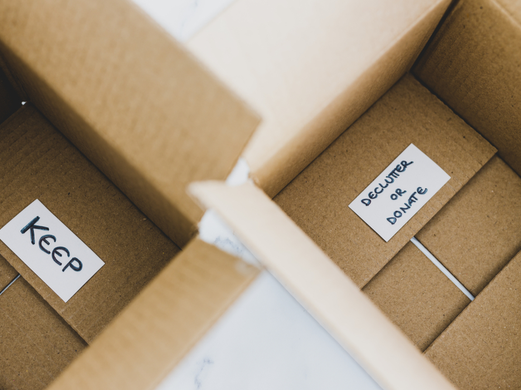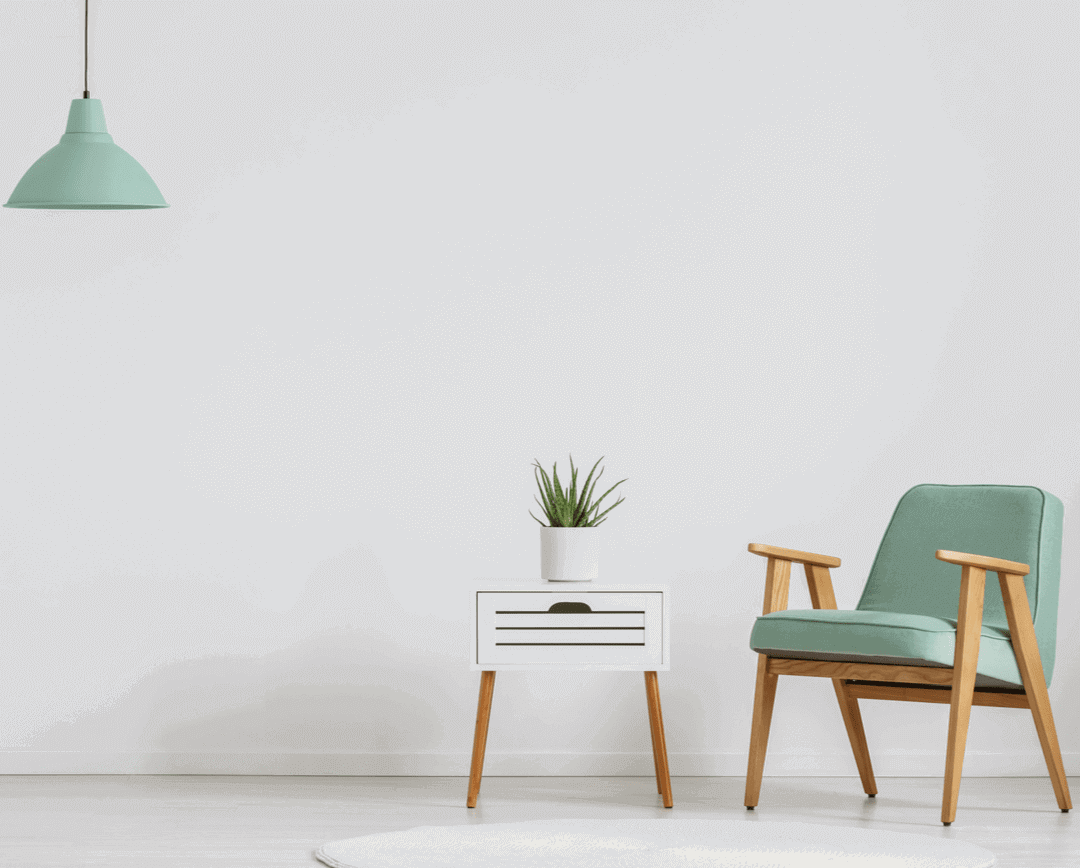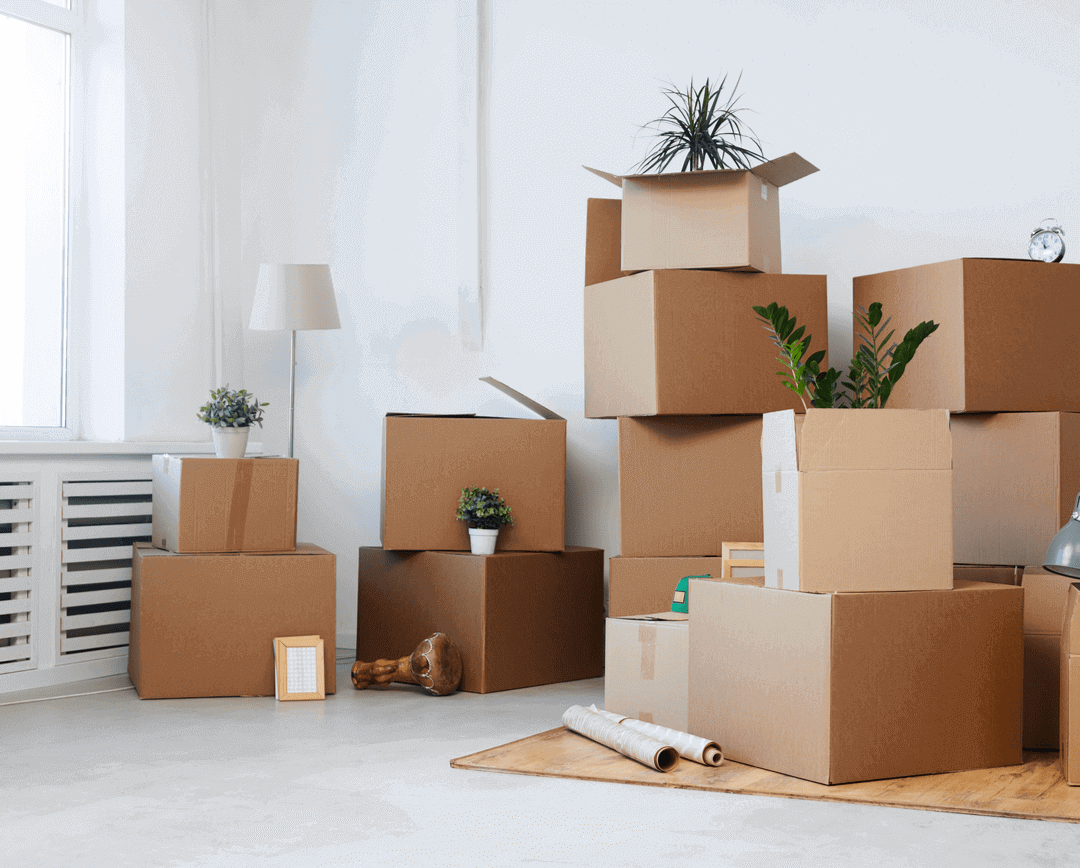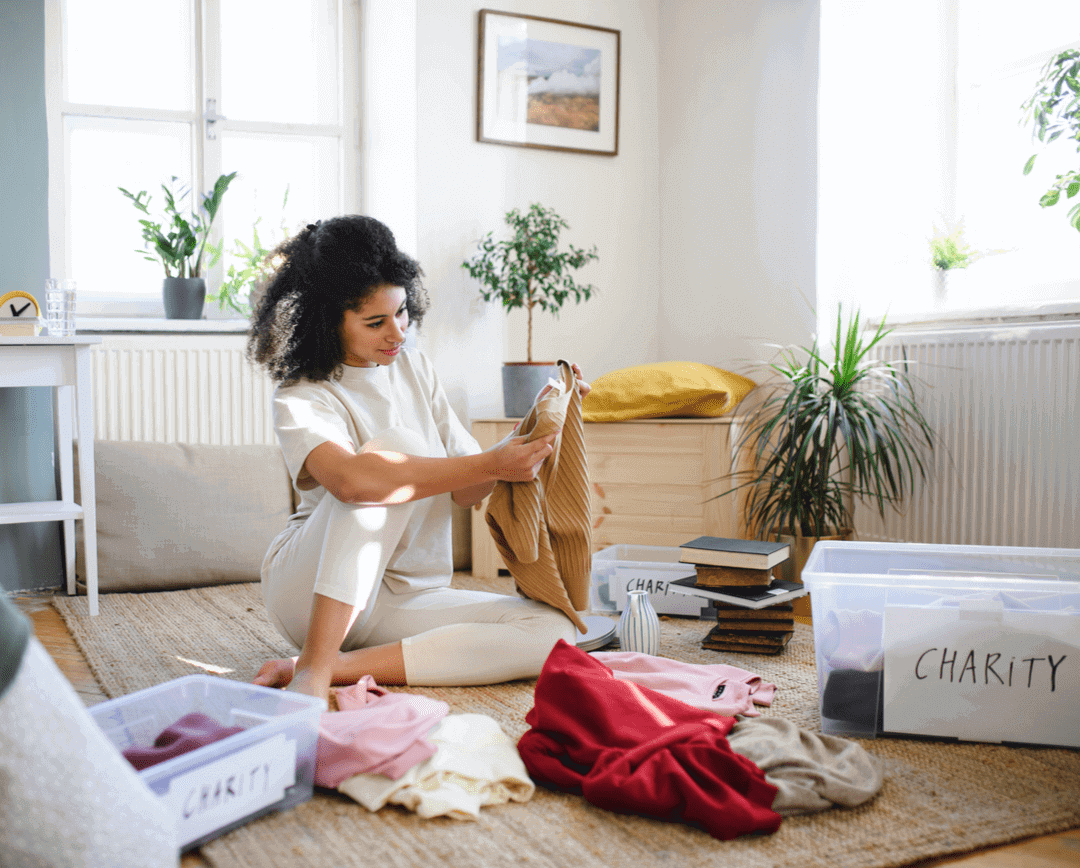How to Declutter Your Home Sustainably

Keeping our home clutter-free is beneficial for our minds and overall well-being. But where does all this stuff go? A bin? Follow this guide about eco-friendly decluttering and avoid increasing your waste.
We include products we think can be useful for our readers. If you make a purchase through the links on this page, we may earn a small commission.
Are you facing difficulties in finding or locating things in your own house? Are you feeling overwhelmed and anxious about the number of items in your home? If the answer is "yes" to one of these questions, this means that it's time to start your own decluttering project. Choose to spend your autumn-winter evenings efficiently by investing some time in reorganizing and decluttering your home. Plus, make use of a great chance for some Instagram stories, since decluttering has never been more fashionable and popular.
We know that there are hundreds of decluttering listicles and YouTube videos out there but this blog post was created for something else: have you ever wondered where the decluttered items end up? What impact decluttering has on the environment? Our planet has a huge waste problem, landfills are increasing in size and volume every year. It's true, decluttering may boost the amount of your household waste and you will probably feel bad seeing all the stuff that should go away. This blog post will help you tackle the clutter monster without harming the environment.
In this article
- What Is Decluttering?
- Minimalism And Decluttering
- Why Should You Declutter?
- How To Start?
- How To Figure Out What You Really Need
- How To Declutter: Popular Methods
- What To Do With Decluttered Items?
- 10 Eco-friendly Tips For Sustainable Decluttering
- Summary
What Is Decluttering?
"To remove things you do not need from a place, in order to make it more pleasant and more useful." - Cambridge Dictionary
Decluttering is a process whereby you get rid of stuff that makes your space look disordered or messy and is not necessary to bring happiness or usability to your life. It’s also important to clarify that clutter is not the same for everyone, but it’s all about how you feel in your own space. For some, a cluttered home can be a small pile of clothes on the bed. For others, it can be tons of old photo albums and souvenirs packed into boxes in the basement. What indicates that it’s time for decluttering is when one starts feeling suffocated or disordered by their own personal space.

Minimalism and Decluttering
Decluttering is about eliminating physical items from our spaces. It’s a method and a process that reflects a top-trending lifestyle worldwide - minimalism. While decluttering is helping us to get rid of unuseful things, minimalism is teaching us a different mental approach to wanting less in our lives. Adopting the principles of minimalism can make us reevaluate the material possessions that turn into clutter.
Although the slogan “back to basics” has been around for quite a long time it’s interesting to see why minimalism is one of the fastest-growing lifestyle trends worldwide now.
- Financial reasons. The COVID-19 pandemic had (and has) a huge impact on the global economy and created uncertainty over the future. Lower incomes, tighter budgets and unemployment would undoubtedly lead to a different lifestyle - the lifestyle of the essential.
- Sustainability. Adopting a minimalist lifestyle has multiple implications not only in terms of our wardrobe but also in terms of the environment around us. Focusing only on what we truly need leads to lower waste and more eco-conscious shopping choices.
- Aesthetic. Since the 1960s, minimalism has been present in art and pop culture. But beyond fine art, minimalism had a great influence on the interior design industry, bringing in clean lines, neutral or earthy colors and basic schemes. This perspective expanded on many other fields, like the tech industry or graphic design, where the simplified easy-to-read text/ fonts, removal of “3D” effects and preference for clean and basic schemes are now a “must-have” online environment for every website.
- Speed of information and technological advances. Personal computing has brought many changes to our everyday life. Computers and accessibility to the internet have replaced the physical version of newspapers, photo albums, CDs, DVDs, paper files, calendars, calculators, phone books and more. This means less stuff in our house.
- Personal style. Instead of chasing the trends, minimalists wear clothes that fit their bodies and lifestyles. They don’t chase quantity, instead, they appreciate quality, creativity and diversity. Despite it being a challenge to the border from fast fashion, the “less is more” life philosophy is gaining in popularity especially when it comes to style.
Why Should You Declutter?
Living in a cluttered and messy environment does not only ruin your aesthetic, but it also has negative reflections on your mind and emotional well-being. Our lives are full of stress and rush, but once we slow down, we start noticing things, appreciating silence and seclusion. We also rediscover the joy of giving compliments to other people, our attention levels rise and we smile more. Eliminating choices will make you reevaluate those that matter more and you will slowly begin to realize that you actually have enough of everything. Additionally, getting rid of unnecessary items can give you a sense of achievement and control of your own life and space. Worth trying, isn’t it?
How to Start?
Now that you know about minimalism, set a date and time to start decluttering. Remember to be realistic about the amount of time it’s going to take, if necessary, split it into a couple of days and focus on one room at a time.
Whatever you decide to start with, just take it all out - empty the contents of your wardrobe, kitchen or office drawer. At this stage, it might be very challenging, and you will probably catch yourself thinking of mistakes, and desperation about cleaning up this whole chaos. Be strong and don't let your thoughts consume you, it’s all about the final feeling of getting rid of heavy ballast.
Decluttering starts with planning. It might be helpful for you to choose one focus area to begin with, like clothing, kitchen or cosmetics. Start from the area that doesn’t feel impossible but still, there’s much to declutter.

Not to fall into the trap of “keeping it just in case”, write down your own sorting system with items that:
- you are keeping
- can be repaired
- can be reused
- can be given to friends or family
- you can donate
- can be sold online as second hand
- can be recycled.
You will also need:
- some reusable bags
- motivating music
- good vibes.
How to Figure Out What You Really Need?
Ask yourself these questions:
- Does this item make me feel happy? Does it bring me joy?
- Does this item bring me any value? Do I use it?
- Why do I have this item? Why did I buy it and for what purpose? Does it serve this purpose now? Did I use it in the past? Why did I stop using it?
- Why do I hold on to this item? Is it likely that I will really use it? Or do I keep it just in case? Do I keep it simply because I spent money on it?
- Does this item reflect my personality?
- Do I keep this because it looks good to other people?
- Am I ready to let it go?
How To Declutter: Popular Methods
Minimizing as a process will likely require time and effort. Having some good decluttering methods will help you make it more efficient and fun at the same time. We rounded up some of the most popular and inspiring decluttering methods for you to read about and get inspired for your own adventure.
Marie Kondo method
Before starting this method you definitely have to buy “The Life-Changing Magic of Tidying Up” - one of the most well-known books for decluttering written by Marie Kondo. Her method received a lot of attention and is considered amongst others as one of the most successful methods to clean up your house and mind. This method will redirect your focus to what you want to keep instead of what you want to get rid of. Gather all of your stuff and start holding each item. Feel it or wear it so you can get a good sense of how it makes you feel. Ask yourself “Does it bring joy to me?” and decide if it’s necessary for your life or not.
Our sustainability tip: If you decide to follow this method, try to answer an additional question: “Does this item harm the environment? And if the answer is yes, think about how you can avoid buying a similar one next time.
One in One out
By following this method you have to let go of one item for every new thing that comes to your house. In this way, you will be able to control your shopping and keep your space clutter-free for a longer time. It can be really hard to say goodbye to things you’ve valued but you will learn to evaluate responsibly how much you need something new.
Our sustainability tip: Letting go doesn’t mean it should land in a trash can. You could create an online chat with some friends and family and let them know every time an old item has to leave your house. Maybe it will be useful for someone else.
The four-boxes party
Set up four different boxes in a room and label them: “Keep”, “Give away”, “Throw away” and “Undecided”. Start placing each item into one of the four boxes. Try to be objective and honest with yourself, as you may end up with the full “Undecided” box.
Our sustainability tip: Set a specific number of household items for the "Undecided" box. Alternatively, you can name this box “Relocate”, bring it to your office and let your colleagues know that they are free to take or donation could be again an option.
One at a day
Find your decluttering buddy - a friend, a family member, or a colleague who wants to minimize their stuff with you. From the first day of the month, you both have to start getting rid of one thing you no longer need. By midnight each day, each of you should farewell one item that has no longer room in your house. To get more into spirits, don’t forget to share your progress with your buddy
Our sustainability tip: #MinsGame is a popular game on Twitter. Following this hashtag to find thousands of other people sharing their decluttering experiences. You can always post some sustainable decluttering tips under their posts and let others know that there are many ways to go green.
Hanger game
This works best for clothing stored on hangers in your closet. Put all hangers in your closet in one direction. Wake up every morning and wear whatever you like. Each day, when you come back home, you have to place whatever you wore back in the closet with the hanger facing in the opposite direction. In this way, you will be able to see which pieces you used. Now you really know what’s necessary and what’s not.
Our sustainability tip: Buy some extra hangers with a specific color to highlight the sustainable or second-hand pieces in your closet. See the number of those growing as your life is getting greener every day. In this way, you will also ascertain that sustainable materials are always more durable than regular or fast fashion.
What to Do With Decluttered Items?
It’s time to figure out what you can do with the items you decided to part from. Disposing of them is an option, but there are also multiple ways to make sure they will end up in a good place without harming the environment. Check out the following ideas to extend their lifespan and don’t burden the planet.
Repair It
Many things could still serve their purpose after some small brushup. From repairing a bag to upcycling your furniture - there are many things you can do to keep your item alive. And it’s not that hard or time-consuming when you use YouTube or Pinterest guides.
Reuse and Upcycle
Let your imagination and creativity out by extending the life of some items. There are so many amazing things you can do with stuff before throwing it away. For example, you can turn your old ladder into a bookshelf and old books into shelves, or make a picnic covering of an old shower curtain, empty glass jars can become flower vases and old worn jeans - a new fancy jean bag. Repurposing is fun, it will keep you busy and take away the urge to buy something new.
Give It Away, Donate Responsibly or Sell It
Start by asking a friend, family member or colleague if they need the item you no longer use. But be honest, it’s not about just taking it off your hands. Make sure the other person really wants this item, as you could just be creating clutter for someone else.
If you don’t find the perfect owner you can look for alternatives. Freecycle or Freegle are online platforms, where you can give away unwanted items and make sure they go to people who really need them. Locally organized clothes swaps may also work for you, plus it’s a good chance for meeting new people! Again this is not a dumping ground for your unwanted items, make sure they will get a second life.
Unfortunately, the situation with donations is tricky. According to the EPA report, 84% of donated textiles end up in landfills and incinerators. This means that we should be mindful of what we give away and who receives it - it might anyways go to a landfill but from a different hand. It's always good to ask a charity what it wishes to receive and make sure they have space, resources or time to manage it properly. If you need ideas for some organizations, check out this list of charities to donate your clothes. You will find useful information about what kind of items they accept and how you can proceed with the donation.
Animal rescue shelters are always willing to take towels or beddings you no longer need to keep animals warm during winter. Also, schools or local libraries will probably accept used books, CDs, movies, video games and more.
“One person's trash is another's treasure”, they say. Your next option would be to sell your items second-hand, which is also the most sustainable choice, especially for clothing and small kitchen appliances. Depop, Vinted, eBay, Amazon or even Facebook Marketplace are easily accessible ways to sell your unwanted stuff. If possible, keep it local to avoid CO2 emissions from transportation.

Recycle It
Separate items into different types: textiles, books and magazines, electricals, etc. Keep in mind that many everyday items, like e.g. cosmetic packaging, are made of several materials that should be separated to get properly recycled into individual components. If you need guidance, simply google “how can I recycle that particular item” and find out how to do it easily. After that check your local council’s website to find the nearest recycling center.
Think about recycling unusable plastic containers or compost wooden kitchen tools. Amongst other household items, you can consider recycling clothing that no longer fits you but are still in good condition. There are also some textile recycling companies that can recycle your unwanted clothes and turn them into filling materials.
10 Eco-friendly Tips for Sustainable Decluttering
If there’s something we no longer want or need, it doesn’t mean that it has reached the end of its useful life. Here are some more ideas and tips for decluttering.
Tip 1. People don’t find clutter just in their houses. You can also organize a decluttering day for your car, yard or even your Google Drive and Dropbox.
Tip 2. The key to managing clutter is to keep up with it. If you spend a couple of minutes sorting through your stuff every day, you can avoid the day(s)-long decluttering marathon once a year.
Tip 3. Make sure to always check the expiration date before giving or throwing away products.
Tip 4. Consider buying slow fashion pieces that always last longer than normal and are less likely to be worn down. In this case, you will keep the same items for a longer period of time and you will avoid constant repairings or reselling.
Tip 5. Remove cosmetic products or expired medicines from their plastic containers and recycle the container. FDA provides the Unused Medicine Guide to learn how to dispose of expired and unused medicine.
Tip 6. In the case of tiny living spaces, simplicity becomes a million times more important. Find your own storage system and declutter sustainably every few weeks to keep your cute tiny house clean and tidy.
Tip 7. Once you’ve done with the deep cleaning and decluttered, you will probably look for a good air freshener. Note that this is not a very eco-friendly choice. Consider natural options, biodegradable paper air fresheners or even a DIY liquid to keep the air fresh and healthy.
Tip 8. There’s no “perfectly decluttered home”, so do not postpone the clean-up for an imagined time that will never come. This process is nothing but a journey you will need to regularly make. Don’t wait for the perfect day or the perfect way to do it - just start!
Tip 9. Everything around us needs to be slowed down. Like slow fashion, there’s also slow decluttering, which takes place over months and years and is about learning to adopt a different lifestyle that is less wasteful and overwhelming. Combining the power of slow decluttering and sustainability tips is the best approach to keeping our minds and spirit uncluttered!
Tip 10. No pressure! Objects are also parts of our emotional lives and it may take some more time until we’re ready to let them go. Make sure an item really means a lot to you and give yourself the time and peace to rethink its role, or even keep it until the next decluttering. However keep in mind that by getting rid of the item, you’re not getting rid of the memory too.
Think Twice Before You Make Your Next Purchase
Now that you sorted everything and your space looks cleaner and more organized, it’s time for some reflection. Think about how you can avoid this clutter in a year or so. The key is “buy less”. Every time you consider buying something new, bring awareness to your decision.
Remember that whatever enters your home will have to go somewhere when it leaves your home. Refuse taking items you don’t need or want, like bags from events or plastic earphones on the flight. Manage your mail preferences and stop receiving junk mail. Be conscious and responsible towards offers and labels that encourage you to buy more.
Sending stuff to landfills should always be the last resort, instead, try to extend the lifespan of your stuff to the maximum. Guilt-free decluttering is always doable! Follow our guidance and keep in mind that nature can not be lumbered with more human waste. The stuff you no longer want can still do some good out there.